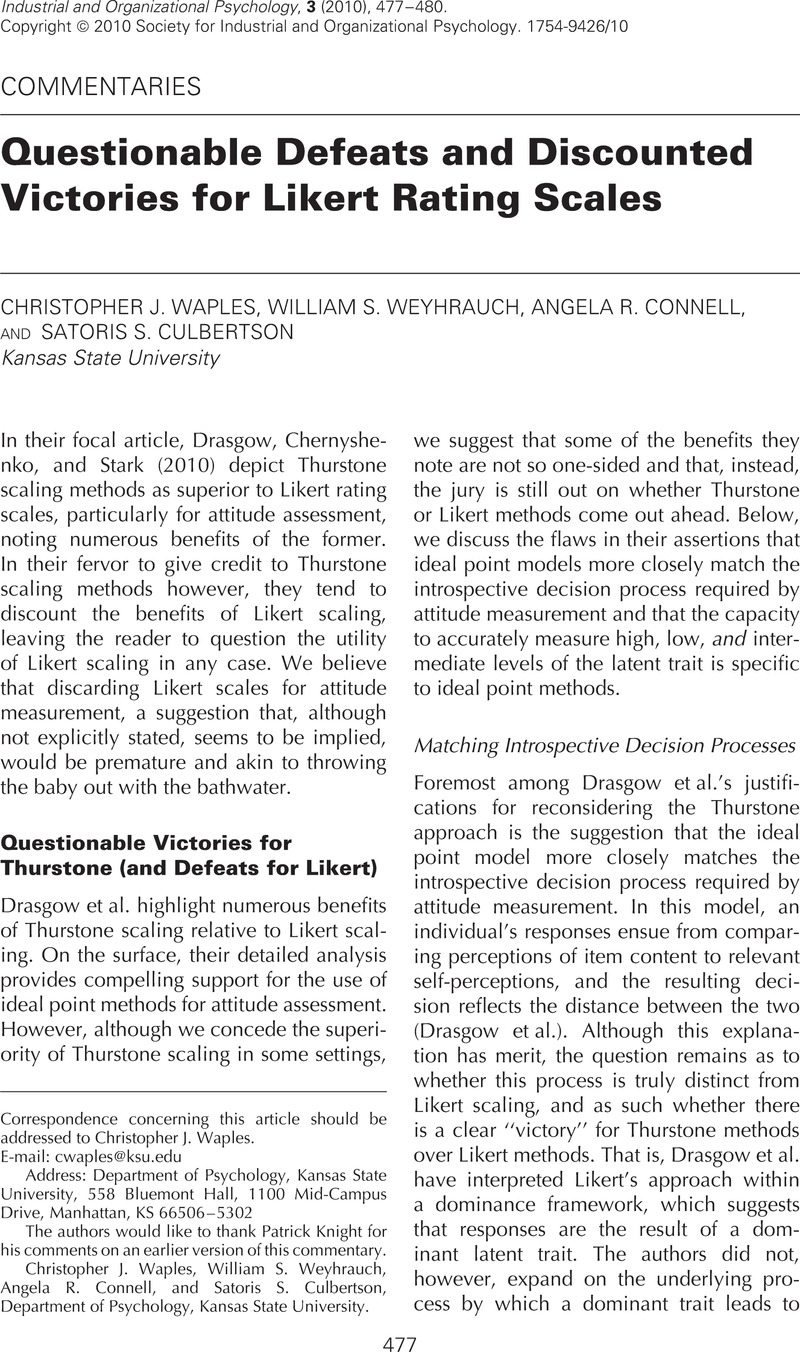Crossref Citations
This article has been cited by the following publications. This list is generated based on data provided by Crossref.
Drasgow, Fritz
Chernyshenko, Oleksandr S.
and
Stark, Stephen
2010.
Improving the Measurement of Psychological Variables: Ideal Point Models Rock!.
Industrial and Organizational Psychology,
Vol. 3,
Issue. 4,
p.
515.
Park, DongGun
Choi, MyungOk
Lee, WonSun
Lee, HyeMin
and
Lee, JunHee
2012.
Comparison between dominance process model and ideal point response model for personality assesment.
Korean Journal of Industrial and Organizational Psychology,
Vol. 25,
Issue. 2,
p.
421.
Tay, Louis
and
Drasgow, Fritz
2012.
Theoretical, Statistical, and Substantive Issues in the Assessment of Construct Dimensionality.
Organizational Research Methods,
Vol. 15,
Issue. 3,
p.
363.
Hamelin, Nicolas
Gbadamosi, Ayantunji
Mohaouchane, Sofia
and
Benelkaid, Imane
2016.
Handbook of Research on Consumerism and Buying Behavior in Developing Nations.
p.
53.
Rice, Kylie
Schutte, Nicola S.
Cosh, Suzanne M.
Rock, Adam J.
Banner, Stephanie E.
and
Sheen, Jade
2022.
The Utility and Development of the Competencies of Professional Psychology Rating Scales (COPPR).
Frontiers in Education,
Vol. 7,
Issue. ,





